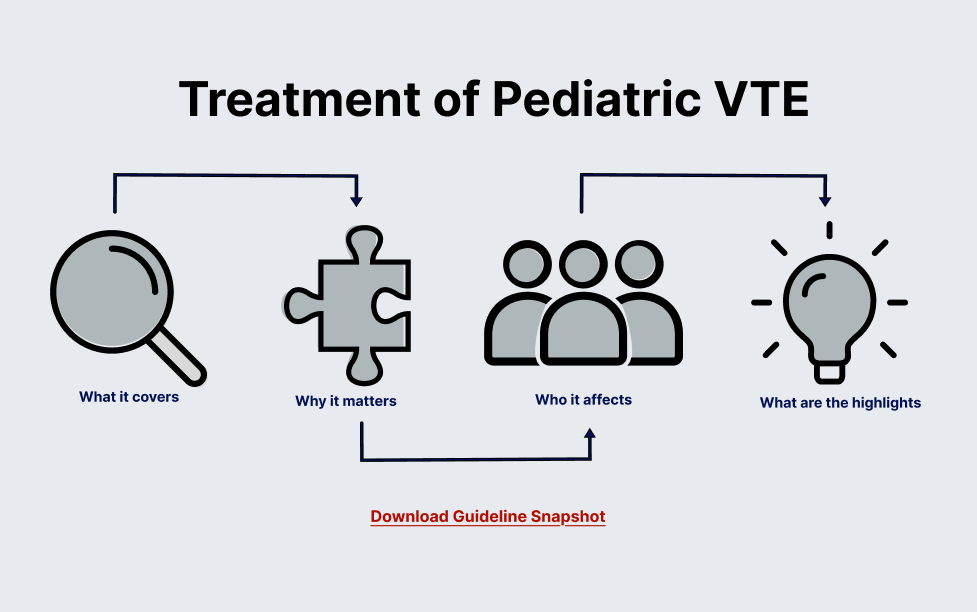VTE Treatment and Prophylaxis in Pediatric Patients
Over recent years there has been a dramatic increase in available information, knowledge, and expertise in relation to appropriate diagnosis, prevention, and clinical management of VTE in neonates and children. The purpose of these guidelines is to provide evidence-based recommendations about the management of VTE in this population.
Access VTE guidelines quickly via the ASH Clinical Practice Guidelines App.
Download for iOS Download for Android Use the App Web Interface
Guideline Implementation Tools and Resources
Visual Summary
Concise visual aid to support understanding of the recommendations and to aid in clinical decision-making:
Summary of 2025 Updates
Table describing key updates to the 2025 recommendations, including newly added recommendations and changes to updated recommendations.
Teaching Slides
Educational slide sets to teach about treatment of VTE in pediatric patients.
Pocket Guide
Brief, evidence-based pocket guides to help physicians provide quality care to patients.
VTE Pediatrics Resources
Resources to better understand VTE and the VTE Pediatrics guideline.
VTE Guideline Development
VTE Patient Stories

Caitlin Augustine was diagnosed with chronic deep-vein thrombosis (DVT), a blood clot that forms in the deep veins, when she was 18 years old during her freshman year of college. At the time, doctors believed she would not survive. Despite having symptoms throughout her life, doctors now believe Caitlin was misdiagnosed for 10 years, and that the clots likely formed after a surgery she had as a child and were exacerbated by hormonal birth control.
After Caitlin was diagnosed, there were many unanswered questions. Due to the size and severity of the clots, Caitlin’s treatment route was unclear. She was put on lifelong blood thinners. Anxious to return to a normal life, after 10 days in the hospital Caitlin quickly returned to school despite being unable to walk. To her surprise, she found it difficult to relate to her friends and fellow students and struggled with post-traumatic stress upon returning.
Looking back, Caitlin wishes she had given herself more time to heal, mentally and physically, before returning to school, but she is thankful for her parents who supported her desire to return to a “new normal” and understood what she was experiencing.
Caitlin is now 30 years old and continues to live with clots that will never go away. Up until just five years ago, she couldn’t work out or run and often dealt with chronic pain and swelling. Caitlin is now able to be active and has defied all expectations. Since her initial diagnosis, Caitlin has made it her mission to educate others about DVT/PE in the pediatric population.
